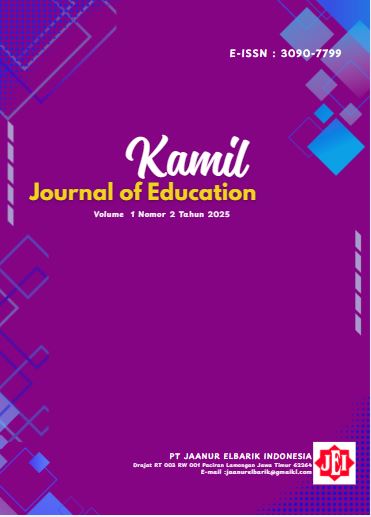The Influence of Peer Relationships on Gadget Addiction at State Senior High School 5, Banda Aceh City
DOI:
https://doi.org/10.65065/r3nv8f15Keywords:
Peer relationships, Gadget addiction, Social interaction, High School Students Balanced Gadget UseAbstract
This study aims to analyze the relationship between peer relationships and gadget addiction among high school students at SMA Negeri 5 Banda Aceh. This study uses a quantitative method with descriptive observation and survey techniques. The results show that female students tend to have higher scores in terms of comfort in sharing problems and happiness with peers, while male students show lower scores in the positive influence of peers on their lives. Additionally, students who have positive social interactions with peers tend to have a lower likelihood of experiencing gadget addiction. Conversely, conflicts with peers can increase gadget use as an escape. This study also shows that the majority of students use gadgets for 8 hours or more per day and exhibit symptoms of gadget addiction such as FOMO (fear of missing out) and emotional dependence. The results of this study indicate that peer relationships play an important role in shaping students' social habits and gadget use. Therefore, it is essential for students to have healthy and balanced social relationships with peers to avoid the negative impacts of excessive gadget useDownloads
References
Abdurrahman Firdaus Thaha (2020 ). Dampak Covid-19 Terhadap UMKM Di Indonesia, Jurnal Brand, 2(1), 147-153
Arsyad M, & Annisa, A. R (2016) Konsentrasi Hambat Minuman (KHM) Ekstra Etanol Buah Sawo. (Achras zapota L) terhadap pertumbuhan Bakteri Escherichia Coli, Jurnal Ibnu Sina, 1 ( 2), 211-218
Ahmad, B., Misbah, Z. K., & Y.S, M. T. (2023). Dampak Penggunaan Gadget Terhadap Perkembangan Anak Usia Dini di SD Insantama Kota Ternate. Jurnal Pengabdian Khairun. https://doi.org/10.33387/jepk.v2i1.6789
Balaka, M. Y. (2022). Metode penelitian Kuantitatif. Metodologi Penelitian Pendidikan Kualitatif.
Fathimah, S., & Wantah, M. E. (2022). Analisys of Using Gadget Analisys in Social Interraction Skills of Children. Journal Civics and Social Studies. https://doi.org/10.31980/civicos.v6i1.1612
gadge, n.1. (2023). In Oxford English Dictionary. https://doi.org/10.1093/oed/5632460932
Kinanthi, N. B., & Abidin, Z. (2022). Efektivitas intervensi musik gamelan untuk menurunkan kecenderungan perilaku kecanduan gadget pada remaja. jurnal empati. https://doi.org/10.14710/empati.2022.34438
Layli Mumbaasithoh, Fiya Ma’arifa Ulya, & Kukuh Basuki Rahmat. (2021). Kontrol Diri dan Kecanduan Gadget pada Siswa Remaja. Jurnal Penelitian Psikologi. https://doi.org/10.29080/jpp.v12i1.507
Setiawan, D. (2018). Dampak Perkembangan Teknologi Informasi dan Komunikasi Terhadap Budaya. JURNAL SIMBOLIKA: Research and Learning in Communication Study. https://doi.org/10.31289/simbollika.v4i1.1474
Sihabuddin, S., Utama, A. A. G. E. S., Nugraha, M. H. S., & Dewi, A. A. N. T. N. (2023). Penggunaan gadget terhadap perkembangan anak usia 4-6 tahun di tk dharma wanita sulawesi selatan. Majalah Ilmiah Fisioterapi Indonesia. https://doi.org/10.24843/mifi.2023.v11.i03.p02
Simanjuntak, J., & Wulandari, I. S. M. (2022). Gangguan Emosi Dan Perilaku Remaja Akibat Kecanduan Gadget. Malahayati Nursing Journal. https://doi.org/10.33024/mnj.v4i4.6221
Widya, R. (2020). Dampak Negatif Kecanduan Gadget Terhadap Perilaku Anak. Jurnal Abdi Ilmu.
Downloads
Published
Issue
Section
License
Copyright (c) 2025 Dian Mahrani Panggabean , Wahyu Wardiati , Elyza Ra'afianiama Cibro , Rahayu Ulandari , Yuliana Nelisma (Author)

This work is licensed under a Creative Commons Attribution-ShareAlike 4.0 International License.









